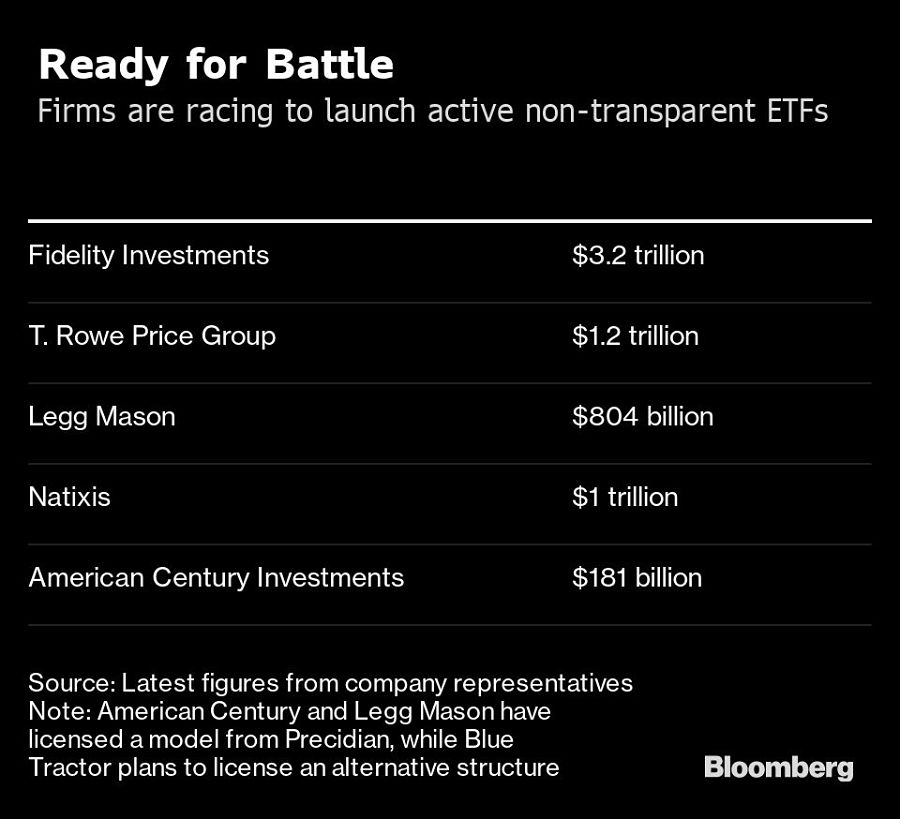

There’s a brutal showdown brewing beside the blissed-out beaches of Hollywood, Fla.
As thousands of financial advisers gather for the ETF industry’s largest event of the year, some of the world’s biggest asset managers are going head-to-head to promote a new type of actively managed exchange-traded fund that could one day house $7 trillion.
Fidelity Investments, Invesco and American Century Investments are among those pitching rival visions for ETFs that disclose their holdings like mutual funds.
Stock pickers have waited more than a decade for regulators to rubber-stamp these products but though they have high hopes, it could be a hard sell. So while former New York Yankees captain Derek Jeter takes the stage, many attendees at the four-day “Inside ETFs” confab will be anxiously gauging appetite for these different structures — and trying to figure out whether the reality lives up to the hype.

“This is going to be one of the key themes of 2020,” said Todd Rosenbluth, director of ETF research at CFRA Research, who expects the products to gather more than $10 billion in their first year. “I think they’ll be successful and I think they may be successful in part because we could see firms that have a more institutional presence come into the market.”
Long awaited
Roughly half of U.S. asset managers don’t offer ETFs at all, according to Bloomberg Intelligence, with many concerned that the daily disclosure required of most ETFs could reveal their stock-picking strategies. That’s why these new structures — which publish their holdings once a quarter — appeal. They combine the tax benefits and distribution advantages of ETFs with any upside from human discretion — all in a package that removes the fear of front-running.
Precidian Investments led the charge for the new model, securing permission for its ActiveShares format in May, and licensing it to money managers including American Century and Legg Mason Inc. American Century is also planning funds using another model after Natixis, T. Rowe Price Group Inc., Fidelity and Blue Tractor Group all got approval for their own separate strategies in December. Invesco is also talking to the regulator about its blueprint.
Now, the major hurdle is standing out from the crowd — and getting financial advisers to appreciate the nuances that separate these products.
“It’s all down to education,” said Terry Norman, founder of Blue Tractor. “The challenge is getting them to understand the difference, what it brings to their investors and their obligations going forward.”
Appealing prospect?
It’s easy to see what’s in it for the issuers. Over the past decade, U.S. equity index mutual funds and ETFs have taken in about $1.6 trillion, while their active counterparts lost approximately $1.4 trillion, according to data from the Investment Company Institute and Bloomberg Intelligence.
But there’s no guarantee that assets will follow when active nontransparent funds start trading.
Active ETFs with conventional disclosure make up about 2% of the $4.6 trillion U.S. market for ETFs, suggesting wannabe issuers could have a tough task ahead. The funds will likely need to log a streak of outperformance relative to their benchmarks to drive demand, even if they’re cheaper than other active funds, according to Bloomberg Intelligence. They will also face competition from passive factor-tracking products.
“It’s definitely a solution for an issuer as opposed to something that is demanded from the end client,” said David Perlman, an ETF strategist at UBS Global Wealth Management. “Not many clients are demanding less transparency for what they hold.”
Big test
So consider this week a test for the whole philosophy behind these funds — as well as an opportunity for asset managers to square up against their competition.
American Century and Legg Mason — which are vying to be first to market with these ETFs — both have speakers at the conference. Representatives from Precidian, Fidelity, Invesco, Blue Tractor, Natixis and the New York Stock Exchange will also discuss the products from the podium.
T. Rowe is notably absent.
“We are aware of the conference and will have representatives attending, but at this stage we are focused on clearing the remaining hurdles toward final SEC approval,” said Lara Naylor, a spokeswoman for the company.
T. Rowe recently published details of the funds it hopes to start selling later this year and hired Tim Coyne, a longtime executive at State Street Corp., to oversee its new ETF business.
But for the rest, including Blue Tractor’s Norman, the conference is a crucial testing ground and an opportunity to raise the profile of the new structures — and issuers — muscling into the ETF industry.
“We felt we need to be in that forum, on that stage,” he said.

Executives from LPL Financial, Cresset Partners hired for key roles.

Geopolitical tension has been managed well by the markets.

December cut is still a possiblity.

Canada, China among nations to react to president-elect's comments.

For several years, Leech allegedly favored some clients in trade allocations, at the cost of others, amounting to $600 million, according to the Department of Justice.
Streamline your outreach with Aidentified's AI-driven solutions
This season’s market volatility: Positioning for rate relief, income growth and the AI rebound
